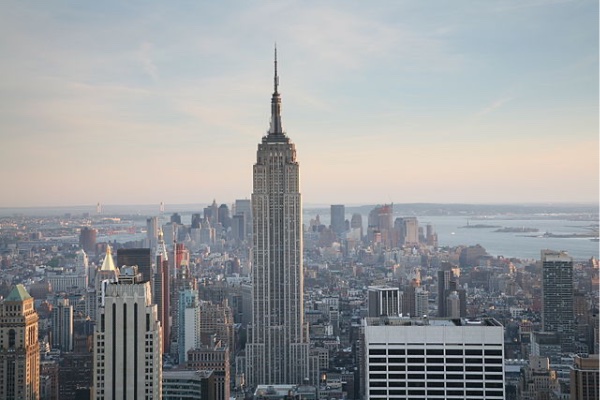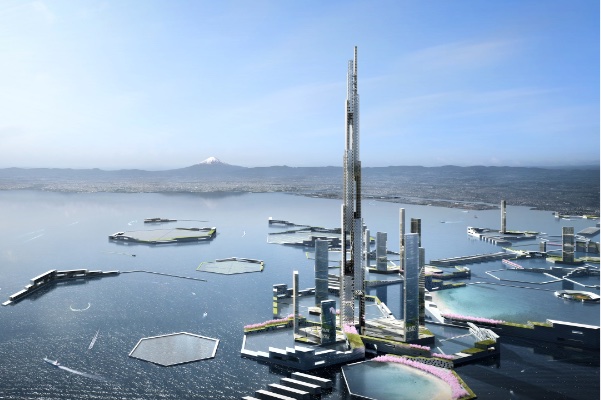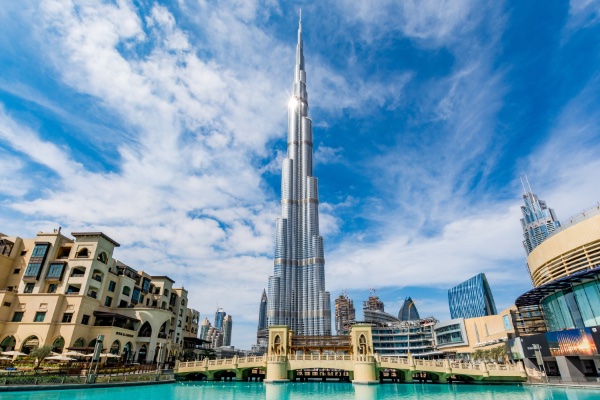ISABEL RUBIO ARROYO | Tungsteno
Some buildings seem to touch the sky. The aspiration to build ever higher has marked the history of humanity. Both for a practical function and because of the human ambition to surpass what has come before, high-rise construction has been a driving force in times such as the 20th century, with the explosion of skyscrapers on Manhattan Island. But thousands of years earlier there were already buildings that stood out because of their height. Here we present some of the buildings that have been among the tallest on the planet throughout history:
The Lighthouse of Alexandria
Africa is the continent that holds the record for having the title of "tallest construction" in the world for the longest time. The Lighthouse of Alexandria (also called the Pharos of Alexandria), considered one of the seven wonders of the ancient world, was for more than a millennium (from 280 BC to 1240 AD) the tallest man-made structure in the world. With a height that could have reached up to 160 metres, this structure was a key reference for navigators of the Mediterranean for centuries. Its location on the island of Faros (Egypt) provided the origin of the word "lighthouse" found in many Romance languages; for example, lighthouse is faro in Spanish and Italian, farol in Portuguese, and phare in French.
The architect Sostratus of Cnidus was in charge of designing this lighthouse at the request of General Ptolemy I. This structure had four different parts, according to National Geographic. The base had a quadrangular layout of more than 30 metres on each side. In addition, there was a second elongated body, a third level with an octagonal shape and, finally, the highest structure, in which a mirror was installed. During the day, this reflected the light of the Sun, while at night it projected the light of a large fire into the distance. The Lighthouse of Alexandria remained standing until the 14th century, when it was heavily damaged by several earthquakes.

The Empire State Building won the so-called "race to the sky" that New York's great skyscrapers waged in the 1920s. It held the record for three decades. Credit: Wikimedia Commons.
From Philadelphia City Hall to the Willis Tower
At the turn of the 20th century, the United States was home to the tallest buildings on Earth for several years. Between 1901 and 1908, the Philadelphia City Hall, at 167 metres, was the tallest inhabitable building in the world. It was followed in New York by the Singer Building (186 metres), the Metropolitan Life Tower (213 metres), the Woolworth Building (241 metres), the Bank of Manhattan Trust Building—now known as the Trump Building—(283 metres), the Chrysler Building (320 metres) and the Empire State Building (443 metres).
From 1969, Chicago also entered this skyscraper race with the John Hancock Center (459 metres). New York would again surpass it with the 526-metre One World Trade Center, and then in 2000 the record would again go to Chicago with the Willis Tower (formerly the Sears Tower), designed by the visionary of the skyscrapers Fazlur Rahman Khan, which reached 527 metres at its tip. This last corporate office building houses more than 100 companies. With its 110 floors, it attracts more than 1.7 million tourists to its observation deck every year. The Willis Tower weighs 222,500 tonnes—the equivalent of 20,000 city buses—and some 2,000 workers were involved in its construction over three years.

Scheduled for 2045, the Sky Mile Tower in Tokyo will rise 1,700 meters above the ground to become the tallest building in the world. Credit: Kohn Pedersen Fox.
The Burj Khalifa and the future of skyscrapers
Measured by the highest tip of the building, the reign of the United States ended in 2010. Since then, the tallest building in the world by any measure has been the Burj Khalifa Tower in Dubai, United Arab Emirates. The views from its heights are impressive, and can be enjoyed without moving from the sofa, both from videos on YouTube and from the Google Arts & Culture website. At more than 828 metres tall and with 160 floors, Burj Khalifa holds several world records. As well as being the tallest building on the planet, it sports the highest outdoor observation platform in the world and the elevators with the world’s longest travel distance.
Behind this milestone in architecture and engineering are the architects Skidmore, Owings & Merrill and Emaar Properties. Construction on the Burj Khalifa began in 2004. In total, more than 40 tests were carried out in a wind tunnel to confirm that the building would withstand the strong winds and sandstorms of Dubai. A hotel is located between the eighth and 38th floors. From the 45th to the 108th floor there are luxury private residences and most of the remaining floors have corporate suites. The tower also has two observation platforms, on the 124th and 148th floors, as well as the At.mosphere restaurant located on the 122nd floor, the highest eating establishment in the world.
But the conquest of heights has not yet written its last chapter. Two projects aim to snatch the Burj Khalifa's record. Without leaving Dubai, the future Creek Tower, signed by the Spanish architect Santiago Calatrava, is already conceived as the new emblem of the city. Although it is not yet clear how tall it will be, what is certain is that this structure, which began to be built in 2016 with a budget of more than 900 million euros, will exceed the current tallest building in the world. Without leaving Asia, and from the center of Japan, the Sky Mile Tower is also projected —a skyscraper that is expected to reach 1,700 meters in height — signed by Kohn Pedersen Fox Associates and Leslie E. Roberston Associates. The mega tower will be built on an archipelago of reclaimed land in Tokyo Bay, leading a sustainable city project within the Next Tokyo 2045 research and development initiative.
· — —
Tungsteno is a journalism laboratory to scan the essence of innovation. Devised by Materia Publicaciones Científicas for Sacyr’s blog.
